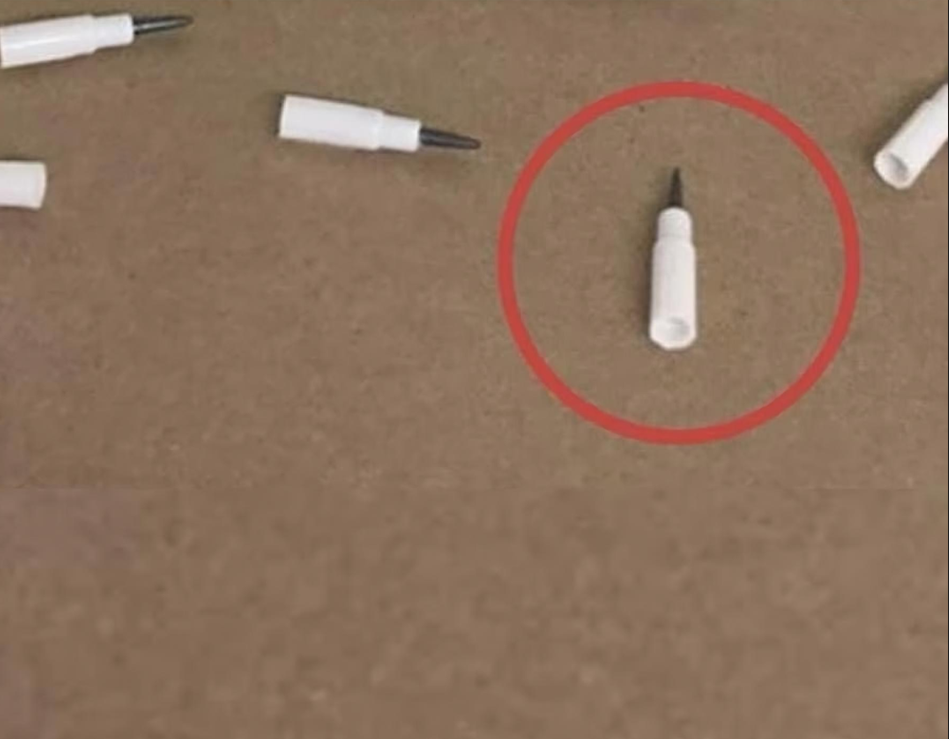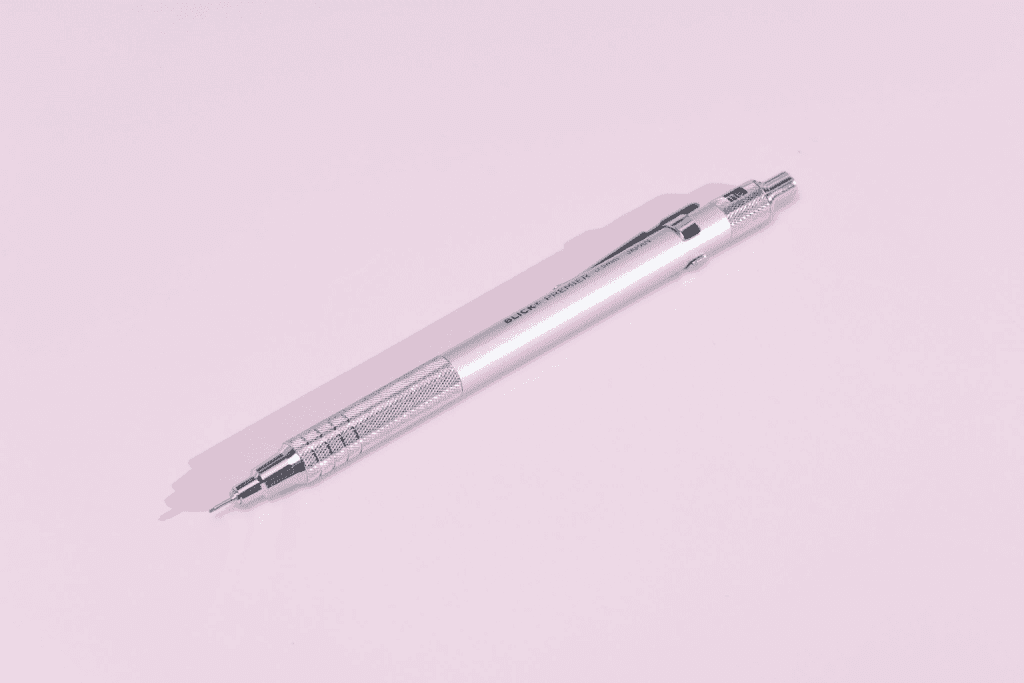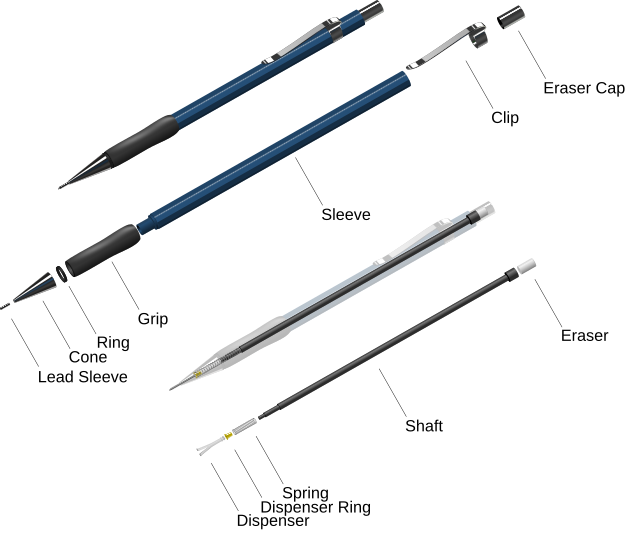In a world dominated by digital devices, the humble mechanical pencil has maintained its place as a timeless tool for the discerning writer, artist, and engineer. These precision instruments, with their sleek design and replaceable leads, offer a level of control and versatility that can’t be matched by their traditional counterparts.
Whether you’re meticulously drafting architectural plans, sketching your latest masterpiece, or jotting down notes in your journal, the mechanical pencil is a faithful companion that elevates your work to new heights. In this comprehensive guide, we’ll delve into the rich history, innovative features, and practical applications of these remarkable writing implements, empowering you to unlock your full creative potential.

The Fascinating History of the Mechanical Pencil
The mechanical pencil traces its origins back to the mid-16th century, when Swiss naturalist and bibliographer Conrad Gesner invented a primitive lead holder. This early iteration of the mechanical pencil required manual adjustments to sharpen the lead, a far cry from the sophisticated mechanisms we enjoy today.
It wasn’t until 1822 that the first true mechanical pencil, complete with a mechanism to propel the lead and replaceable refills, was patented by Sampson Mordan and John Isaac Hawkins in Britain. Over the next century, numerous innovators built upon this foundational design, introducing features like spring-loaded mechanisms, twist-feed systems, and even the incorporation of erasers.
The mechanical pencil’s rise to prominence accelerated in the early 20th century, with the introduction of the “Ever-Ready Sharp Pencil” by Japanese metalworker Tokuji Hayakawa. Hayakawa’s invention, which featured a screw-based lead advancement system, quickly gained popularity and laid the groundwork for the diverse range of mechanical pencils we enjoy today.
The Anatomy of a Mechanical Pencil
At the heart of a mechanical pencil lies a precisely engineered mechanism that allows the user to advance the lead with the simple press of a button or twist of a knob. This mechanism can take on a few different forms, each with its own unique advantages:
Ratchet-Based Pencils:
Ratchet-based mechanical pencils feature a ring-shaped mechanism at the tip, with two or three small jaws that grip the lead. When the button at the end of the pencil is pressed, the jaws open and push the lead forward. A small rubber device holds the lead in place when the button is released, allowing the user to write with precision.
Screw-Based Pencils:
Screw-based mechanical pencils rely on a threaded mechanism to advance the lead. By twisting the knob at the end of the pencil, a slider moves down the barrel, pushing the lead forward. Some screw-based models also feature a locking mechanism that allows the user to retract the lead back into the barrel.
Clutch Pencils (Lead Holders):
Clutch pencils, also known as lead holders, are a variant of the ratchet-based design. These pencils use thicker leads (ranging from 2 to 5.6 mm) and typically hold only a single piece of lead at a time. The jaws open and close to allow the user to freely move the lead in and out of the barrel, making them a popular choice for technical drawing and sketching.
Regardless of the internal mechanism, mechanical pencils offer a level of precision and control that traditional wooden pencils simply can’t match. With their interchangeable leads, users can choose from a variety of thicknesses and even colors to suit their specific needs, further enhancing the versatility of these remarkable writing tools.
The Advantages of Mechanical Pencils

In a world where digital devices have become ubiquitous, the mechanical pencil has managed to maintain its relevance and appeal. From students and professionals to artists and hobbyists, this timeless tool offers a range of benefits that make it an indispensable addition to any writing or drawing arsenal:
Precision and Control:
The mechanical pencil’s adjustable lead mechanism allows for unparalleled precision and control, enabling users to create fine details, intricate designs, and perfectly uniform lines with ease. This level of control is particularly valuable for technical drawing, architectural sketching, and other precision-based tasks.
No Sharpening Required:
Unlike traditional wooden pencils, mechanical pencils eliminate the need for constant sharpening. With a simple press of a button or twist of a knob, users can extend a fresh section of lead, reducing the time and effort required to maintain a sharp point.
Versatility:
Mechanical pencils come in a wide range of lead thicknesses, from the ultra-fine 0.2 mm to the bolder 2.0 mm and beyond. This versatility allows users to choose the perfect lead size for their needs, whether they’re creating delicate illustrations or taking robust lecture notes.
Durability and Longevity:
With their sturdy metal construction and replaceable components, mechanical pencils are built to last. Unlike wooden pencils that can break or become dull, a well-maintained mechanical pencil can serve its owner for years, if not decades, making it a worthwhile investment.
Sustainability:
By eliminating the need for constant sharpening and replacing wooden pencils, mechanical pencils offer a more sustainable writing solution. The ability to refill the lead and, in some cases, the eraser further reduces waste and environmental impact.
Aesthetic Appeal:
Mechanical pencils come in a wide range of designs, from sleek and minimalist to bold and eye-catching. This aesthetic versatility allows users to choose a pencil that reflects their personal style and complements their workspace or creative environment.
Practical Applications of Mechanical Pencils

The versatility of mechanical pencils extends far beyond the traditional realm of writing and sketching. These precision instruments have found a home in a variety of industries and applications, showcasing their remarkable adaptability:
Technical Drawing and Engineering:
Mechanical pencils are an indispensable tool for architects, engineers, and technical drafters, who rely on their consistent line quality and the ability to produce fine, detailed drawings. The wide range of lead thicknesses, from 0.3 mm to 2.0 mm, allows for precise measurements and intricate schematics.
Fine Art and Illustration:
Artists and illustrators have long recognized the benefits of mechanical pencils, which allow for delicate, controlled strokes and the ability to create subtle gradients and shading effects. The interchangeable lead sizes and the option to use colored leads further expand the creative possibilities.
Educational and Academic Settings:
Mechanical pencils are a beloved choice among students, from elementary school to university, due to their reliable performance, lack of sharpening requirements, and the ability to take neat, legible notes. The durability of mechanical pencils also makes them a practical choice for classroom use.
Bullet Journaling and Calligraphy:
The precise control offered by mechanical pencils has made them a popular choice for bullet journalers and calligraphers, who use them to create intricate layouts, hand-lettered headers, and delicate decorative elements.
DIY and Crafting:
Mechanical pencils are not limited to traditional writing and drawing applications. Crafters and DIY enthusiasts have found innovative uses for these tools, from precise measurements in sewing and woodworking projects to detailed markings in scrapbooking and mixed media art.
No matter the application, the mechanical pencil’s ability to combine precision, versatility, and convenience makes it an indispensable tool for a wide range of industries and creative pursuits.
Choosing the Right Mechanical Pencil
With so many options on the market, selecting the perfect mechanical pencil can feel overwhelming. However, by considering a few key factors, you can find the ideal writing instrument to suit your needs:
Lead Size:
As mentioned earlier, mechanical pencils offer a range of lead thicknesses, from the ultra-fine 0.2 mm to the bold 2.0 mm and beyond. Consider the type of work you’ll be doing and choose a lead size that aligns with your preferred level of detail and line thickness.
Mechanism Type:
Decide whether you prefer the ratchet-based, screw-based, or clutch pencil (lead holder) mechanism, based on your personal writing style and the level of control you require.
Barrel Design:
Mechanical pencils come in a variety of barrel designs, from sleek metal bodies to ergonomic grips and textured surfaces. Choose a design that feels comfortable in your hand and complements your personal aesthetic.
Additional Features:
Some mechanical pencils offer additional features, such as built-in erasers, lead indicators, or retractable tips. Determine which features are most important to you and how they might enhance your writing or drawing experience.
Brand and Quality:
Research reputable brands known for their high-quality, long-lasting mechanical pencils. While the price tag may be higher, investing in a well-made pencil can pay dividends in terms of durability and performance.
By considering these key factors, you’ll be well on your way to finding the mechanical pencil that perfectly suits your needs and elevates your creative endeavors to new heights.
Mastering the Art of Mechanical Pencil Use
Using a mechanical pencil may seem straightforward, but there are a few techniques and best practices that can help you get the most out of this versatile writing tool:
Proper Grip:
Maintaining a comfortable, controlled grip is essential for achieving precise, consistent strokes. Keep your fingers relaxed and your hand positioned close to the tip of the pencil, allowing for maximum control and dexterity.
Lead Adjustment:
Regularly check the length of your lead and extend it as needed to maintain a sharp, consistent point. Avoid letting the lead become too short, as this can compromise the pencil’s performance and lead to frustrating breakages.
Gentle Pressure:
When writing or drawing, apply gentle, consistent pressure to the page. Pressing too hard can cause the lead to break or the pencil to skip. Let the weight of the pencil do the work, and focus on smooth, flowing motions.
Consistent Angle:
Maintain a consistent angle between the pencil and the page, usually around 45 degrees. This helps ensure even, uniform lines and prevents the lead from breaking or wearing down unevenly.
Proper Storage:
When not in use, store your mechanical pencil in a protective case or container to prevent damage to the lead, mechanism, and overall integrity of the instrument.
Clean and Maintain:
Periodically clean your mechanical pencil by using a small brush or compressed air to remove any built-up graphite or debris. This will help ensure smooth operation and extend the life of your writing tool.
By mastering these techniques, you’ll be able to harness the full power of your mechanical pencil, achieving exceptional results in all your writing, drawing, and creative endeavors.
The mechanical pencil is a true testament to the enduring power of innovation and craftsmanship. From its humble beginnings in the 16th century to its modern-day incarnations, this remarkable writing tool has continuously evolved to meet the needs of discerning users across a wide range of industries and applications.
Whether you’re an architect drafting detailed plans, an artist bringing your visions to life, or a student taking meticulous notes, the mechanical pencil offers a level of precision, versatility, and convenience that simply can’t be matched by traditional writing implements. By understanding the history, anatomy, and practical applications of these remarkable instruments, you can unlock a world of creative possibilities and elevate your work to new heights.
So, embrace the power of the mechanical pencil and let it be your faithful companion on your journey of discovery, innovation, and artistic expression. With the right pencil in hand, the possibilities are truly endless.


